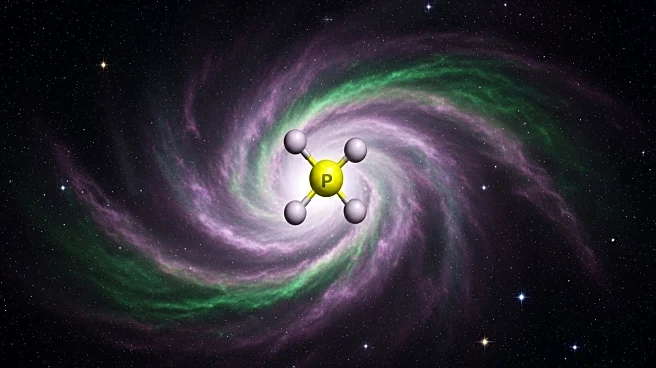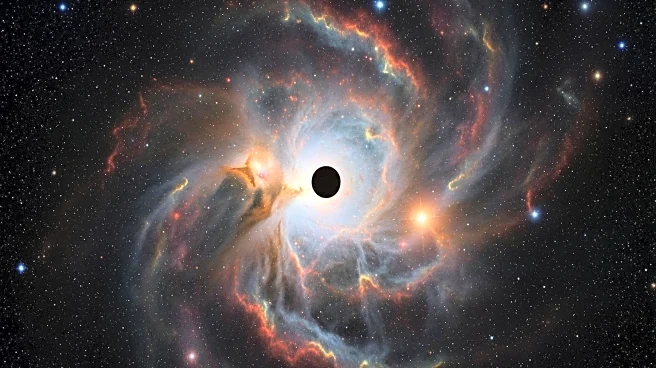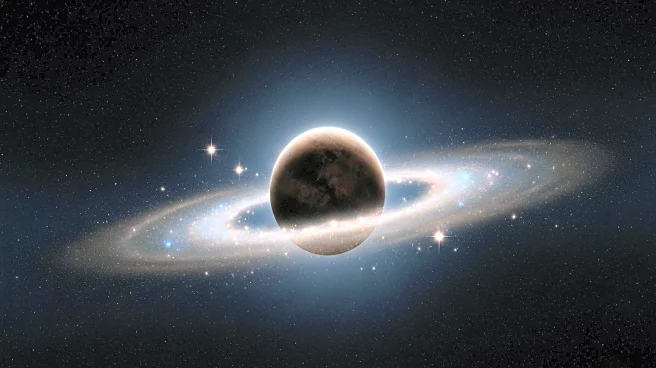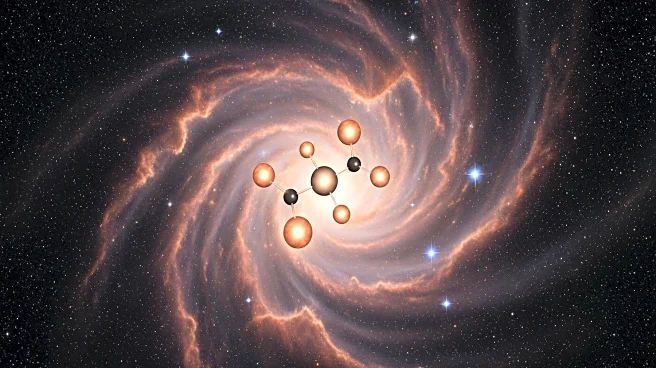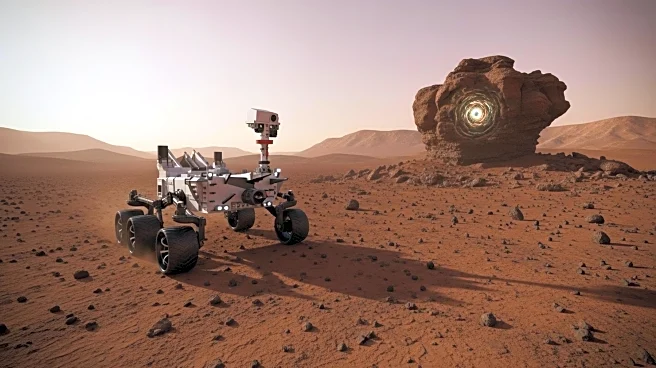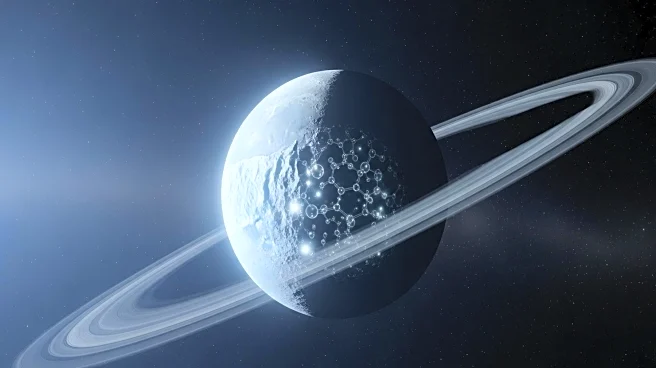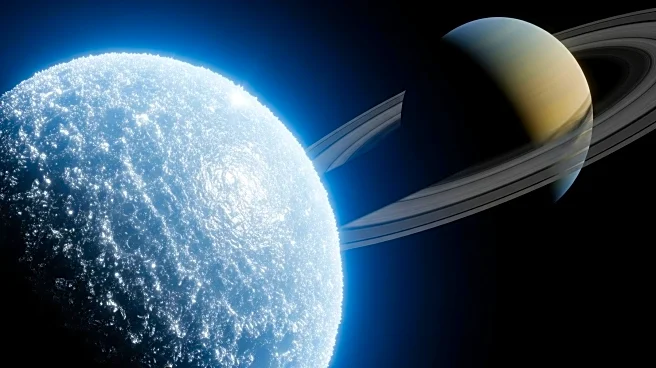What's Happening?
Astronomers have discovered an unexpected abundance of phosphine in the atmosphere of a brown dwarf named Wolf 1130C, located 54 light-years from Earth. This discovery was made using data from NASA's James Webb Space Telescope. Phosphine, a molecule composed of three hydrogen atoms and one phosphorus atom, is typically associated with biological processes on Earth, where it is produced by decaying organic matter. The concentration of phosphine detected was 100 parts per billion, significantly higher than previous observations in other brown dwarfs. This finding has surprised researchers, as phosphine is extremely rare beyond Earth and is considered a potential biosignature in the search for extraterrestrial life.
Why It's Important?
The detection of phosphine in the atmosphere of a brown dwarf is significant because it challenges existing theories about the chemical composition of such celestial bodies. On Earth, phosphine is linked to biological activity, making its presence in space a point of interest for astrobiologists. The discovery could have implications for the search for life beyond Earth, as phosphine is considered a promising target for identifying habitable environments. This finding also highlights the capabilities of the James Webb Space Telescope in advancing our understanding of the universe and potentially identifying signs of life on other planets.
What's Next?
Researchers are likely to conduct further studies to understand the source of phosphine in Wolf 1130C's atmosphere. The presence of a nearby white dwarf, Wolf 1130B, may play a role in the generation of phosphorus, which could explain the phosphine abundance. Future observations and analyses will aim to determine whether similar conditions exist in other brown dwarfs or exoplanets, which could refine the criteria for identifying habitable worlds. The scientific community may also explore the implications of this discovery for the broader search for extraterrestrial life.
Beyond the Headlines
The discovery of phosphine in a brown dwarf's atmosphere raises questions about the chemical processes occurring in such celestial bodies. It suggests that our understanding of atmospheric chemistry in space is incomplete and that there may be unknown mechanisms at play. This finding could lead to a reevaluation of the criteria used to assess the habitability of exoplanets and other celestial objects. Additionally, it underscores the importance of interdisciplinary research in astronomy, chemistry, and astrobiology to unravel the mysteries of the universe.

